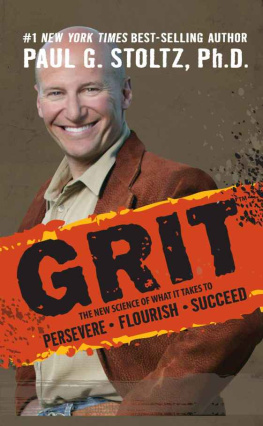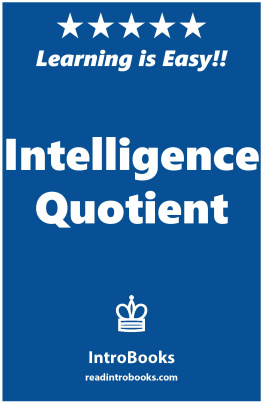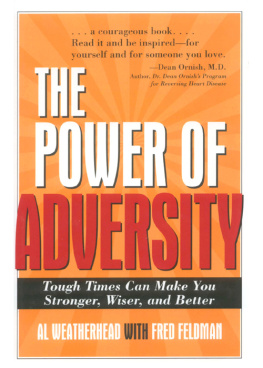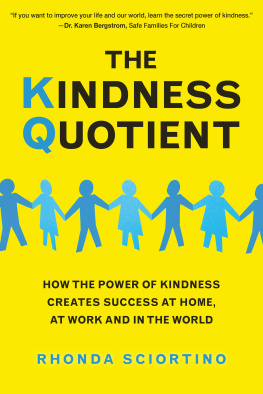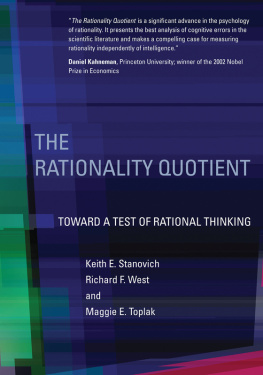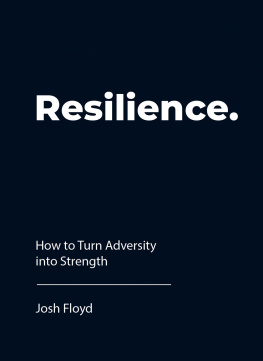1.1 How Is Your Organizational Operating System? Part One
1.2 How Is Your Organizational Operating System? Part Two
2.1 The Effect of Your Response
3.1 The AQ Continuum
4.1 The AQ Hierarchy of Control
4.2 Graphing Your CORE Profile
4.3 CORE Tendencies
5.1 The Value Gap
5.2 Strengthening Your CORE
5.3 The Ripple Effect
5.4 Listen to Your CORE
5.5 The LEAD Sequence Base Camp 1
5.6 The Action Funnel
5.7 LEADing Others
6.1 The Significance Scale
6.2 Significance Deposits
6.3 Strengthening Their CORE
7.1 Overview of Source-Based Thinking
7.2 Six Fatal Flaws in Hiring
7.3 Sample Climber Words
7.4 Significance Enhancers for the Search Process
7.5 Viral Marketing/E-Mail Appeals
7.6 Where to Find Climbers
8.1 L4Type One Hiring Errors, LoseLoseLoseLose
8.2 The Hiring Cost Calculation
8.3 Assessing the Variance in Your Screening Process
8.4 Ways to Win the Data Game
8.5 Sample Hiring Funnel
8.6 AQ-Based Screening of Application Materials
8.7 AQ-Based Reference-Check Questions
8.8 AQ-Based Interview Sample Questions
9.1 Low-Performance Teams
9.2 High-Performance Teams
9.3 The Team AQ Process
9.4.1 Team AQ Process Sample Template
9.4.2 Ground Level Insights
9.4.3 Mid-Mountain Insights
9.4.4 Sky Level Insights
9.4.5 Action Plan/New Norms
9.4.6 LEADing the Team
9.5 Sample Ground Level Team AQ Printout
9.6 Graphing Your Team Ground Level CORE
9.7 Team CORE Tendencies
9.8 Ground Level Team AQSample Industry Averages
9.9 Condensed Snapshot of Mid-Mountain Team AQ
9.10 Graphing Your Team Mid-Mountain CORE
9.11 Mid-Mountain Team AQSample Industry Averages
9.12 Sample Mid-Mountain Team AQ Printout
9.13 Sky LevelPanoramic Team AQ
9.14 Graphing Your Team Sky Level CORE
9.15 Sky Level Panoramic Team AQSample Industry Average
9.16 Sample Sky Level Panoramic Team AQ Printout
9.17 Using LEAD with Teams
10.1 Cultural AQ Cycle
10.2 Cultural Scan
10.3 Assessing the Leaders CORE
10.4 AQylize the Language
10.5 The AQ Cultural Glance (Part One)
10.6 The AQ Cultural Glance (Part Two)
10.7 Interpreting Your AQ Cultural Glance
10.8 Graphing Your Cultural CORE
10.9 Interpreting Your Cultural CORE
10.10 Cultural Tendencies
10.11 Clear Your Gear
11.1 The Ascent Toward Wisdom
I N AN AGE when we face an average of twenty-three adversities a day, most of us are ill-equipped to manage, let alone thrive, amid such unprecedented demands.
Before 7 A.M. you may be sipping your morning coffee and scanning the morning paper only to discover some megaconglomerate is interested in buying or merging with your company. Another story reports that children now spend forty-seven hours per week in front of some form of uncensored media, and you think about the implications for your own son and daughter.
Despite your best efforts to outwit traffic, getting anywhere is a hassle. What will it be today? Perhaps the parking lot is full, or your flight is delayed, and you miss a connection. When you arrive at work, you are met with fifty-one E-mail and twenty-three voice-mail messages. Another eighty-two messages will bombard you by the end of the day. There is no way to answer them all. You sift through the junk and, although several messages are important, you are able to respond curtly to only a few before you dash to the morning meeting. The meeting runs long, and tensions are high; people jump in and out of the discussion to respond to the constant cacophony of beepers and cell phones. On the way back to your desk you are handed the latest financials for your department and make a mental note to peruse them before tomorrows budget meeting, asking yourself, Yes, but when?
At your desk, you whip open your organizer and see that fifteen items have increased to nineteen, seven of which youll complete today, barring any unforeseen events, but there are always unforeseen events! As you prioritize, your sons school nurse calls; he has a fever. You cant miss the client meeting scheduled for lunch, but even so, you have to.
Rumors of the reported merger or buyout color the day, and the leaders are conspicuously absent. You wonder how hard you should work on todays strategic imperative when it may now be irrelevant. At home that evening, you sit down to sift through some papers after a quick bite to eat, and you hear your son coughing. He seems to be getting worse. Its going to be another late night.
Welcome to the realities of the entrepreneurial, high-velocity New Economy. Each day demands greater speed, capacity, and capabilities. Few can keep up without taking a tremendous toll upon themselves and those around them. It takes more than strong coffee and high-speed Internet lines to meet todays demands, but what about tomorrows? USA Today reports that in a typical day office workers send and receive 163 messages via phone, fax, E-mail, postal mail, interoffice mail, and cell phones. That number doubles every year.
In 1967 Gordon Moore, one of the founders of Intel, predicted that computers would double in speed and capacity every eighteen months. For more than thirty years, Moores Law has held true. We may attribute the breakthroughs to humaningenuity, but we have created our own prison. We, the consumers, demand greater speed and capacity from our technology. The latest pocket-size Palm Pilot organizer has greater horsepower than the computer I used to write my doctoral dissertation. We consistently upgrade our computers to meet our new demands.
Of the more than 100,000 people I have polled, who represent a wide range of careers, industries, and countries, 98 percent predict a more difficult, chaotic, and uncertain future. As this impending reality unfolds, hope, innovation, aspirations, and momentum are all increasingly at risk.
If we dont upgrade our human operating systems in a similar manner, the cost will continue to be enormous. Performance, agility, resilience, problem solving, decision making, innovation, optimism, and health all will be degraded. Nowhere in our training or upbringing were we given a viable way to upgrade our operating systems so that we could tap ever-greater speed and capacity to meet ever-greater demands. Yet, upgrade we must.
Imagine running your desktop machine on a 1967 operating system. Its capacity would be severely compromised and would fall far short of what you require it to do. The same is true of the human operating system as it attempts to process an endless flow of information and to perform increasingly complex and demanding tasks. Like your computer, your human operating system drives everything else. All learning, skills, capabilities, knowledgethe human softwareare driven by your hardwired operating system.
It is also impossible to meet todays ever-increasing demands simply by adding more software in the form of information, knowledge, and skills. The only way to meet these demands is to upgrade your operating system by optimizing your existing software and expanding your capacity for storing more software. And you must go beyond the traditional approaches and standard methods. You must upgrade your operating system by understanding and strengthening your Adversity Quotient (AQ).


